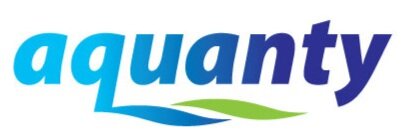Snow Modelling Products on HydroClimateSight
Figure 1: Mapping SWE data via SNODAS data layer
With a big winter storm sweeping across Ontario over the past week, we thought it might be a good time to review the various snow modelling products available through the HydroClimateSight decision support platform.
SNODAS
Figure 2: Integrated, catchment level historic SWE data
First, HydroClimateSight provides a record of past snowpack data through the National Snow and Ice Data Center’s Snow Data Assimilation System (SNODAS) data product. This data layer is available through the “Remote Sensing” tab and can be activated through the “Current Conditions” data layer menu (see Figure 1). SNODAS is a data assimilation product which integrated multiple sources of data, including in situ measurements, LiDAR and satellite derived data products and provide the best possible estimates of snow water equivalents (SWE) to support hydrologic modeling and analysis. The SNODAS data layer is updated daily and available at a 1km resolution. Use the time-stepper buttons at the bottom left of the window to review SNODAS at different times, the platform provides access to one year of historical SNODAS data.
Site Specific Snow Water Equivalent (SWE) Data - Historic/Observed
Figure 3: Integrated, catchment level SWE forecast
SNODAS is a critical component in the provision of Aquanty’s hydrologic forecasting services. Both the physics based (HGSRT) and machine learning based (HydroSphereAI) forecasting systems require some form of forcing data. For the physics-based models forcing data consists of liquid water fluxes data (rain plus snowmelt). The machine-learning forecast forcing data consist of total precipitation, atmospheric radiation metrics, wind, humidity and temperature. The forcing data are derived in part using site specific snow water equivalent (SWE) data. Historic SWE data for a particular catchment area is available through the “Snow Water Equivalent” tab (see Figure 2) when you click on active stations within any forecast feed. These data are produced by integrating historic SNODAS data over the upstream catchment area at each individual forecasting station. To access this data, open the desired forecast feed and click a station. If this station has a polygon associated with it (which is true for ALL stations in the Conservation Ontario forecast feed) you should be able to review average SWE depth (mm) and total SWE volume (m3) of the associated catchment area.
Site Specific Snow Water Equivalent (SWE) Data – Future/Forecasted
Forecasts for upcoming SWE are available by accessing the “Weather Forecasts” tab within any station window (see Figure 3). In this window you can find a 7-day (GEPS Daily) and 32-day (GEPS Subseasonal) forecast of upcoming SWE, potential evapotranspiration, and liquid water flux (rain + snowmelt). The SWE forecast is produced using iSnobal, an open-source model which simulates the surface energy and mass balance of the snowpack; it is initialized from SNODAS and forced using the same ensemble weather forecast used to drive the AI streamflow forecasting models. On the HydroClimateSight platform we are currently forcing our models using the Global Ensemble Prediction System (GEPS) from ECCC.
Machine-Learning Based Snow Model
While we can’t offer this to HydroClimateSight users at this time, Aquanty is actively working on a machine-learning based snow model which should be available to users in the coming weeks. When it is available, our ML-snow model outputs should be available through the Snow Water Equivalent. The ML-snow model will operate in much the same way as HydroSphereAI (i.e. our streamflow forecasting algorithm). The algorithm will be trained on a similar database of catchment attributes and historic weather data, with the main difference being that the prediction target is SWE from the ERA5-Land reanalysis datasets, rather than streamflow. We are actively working on developing this ML-snow model, and have validated ERA5-Land SWE against snow course surveys and found very good agreement (as good as SNODAS) in Ontario. Stay tuned for updates!



